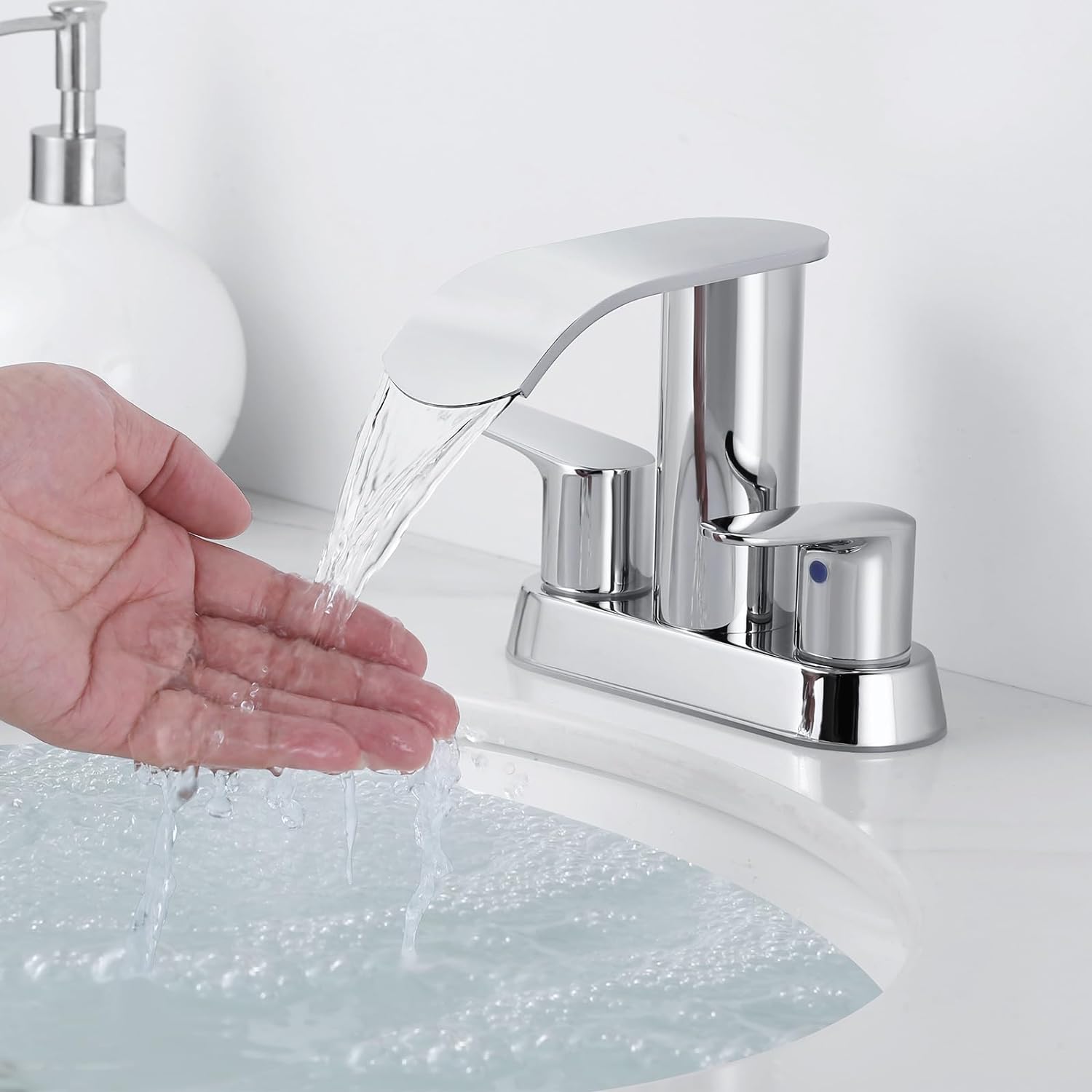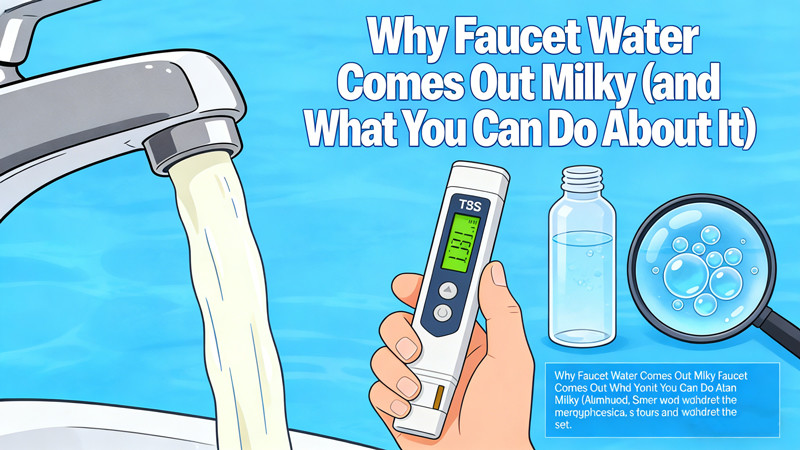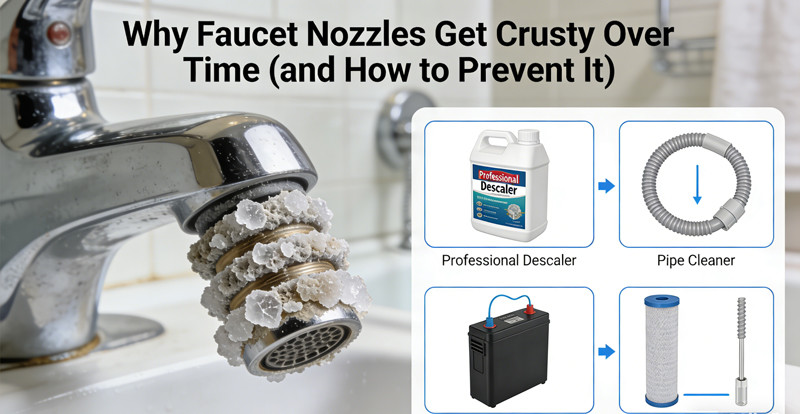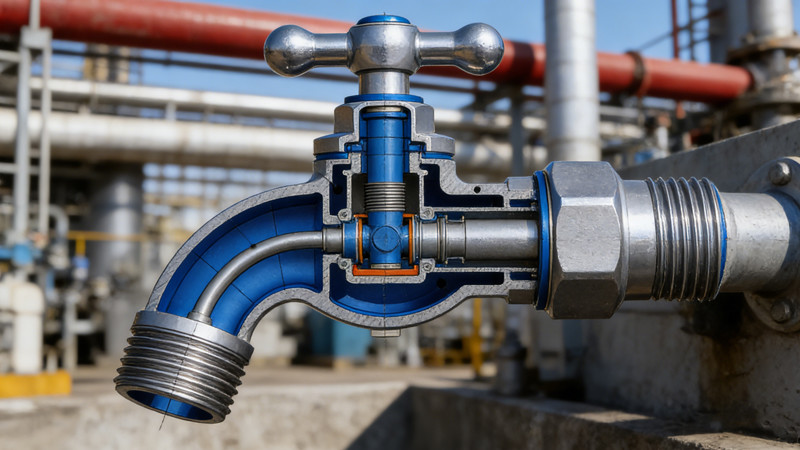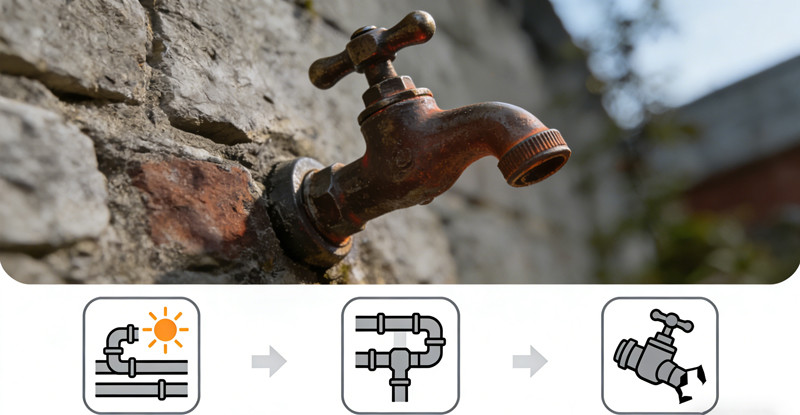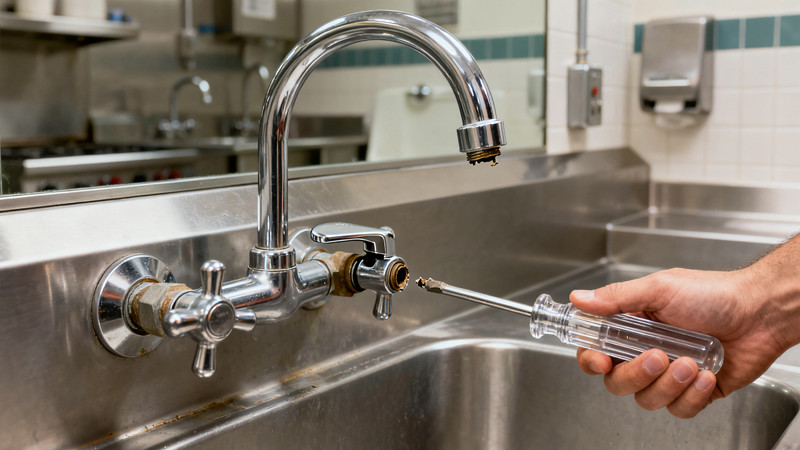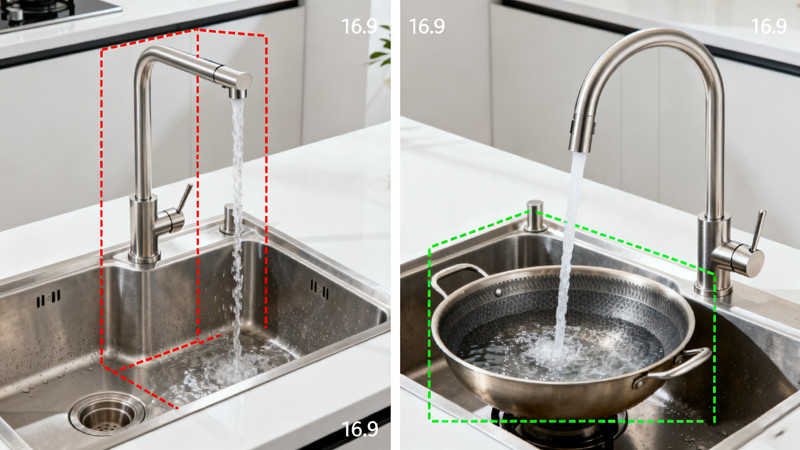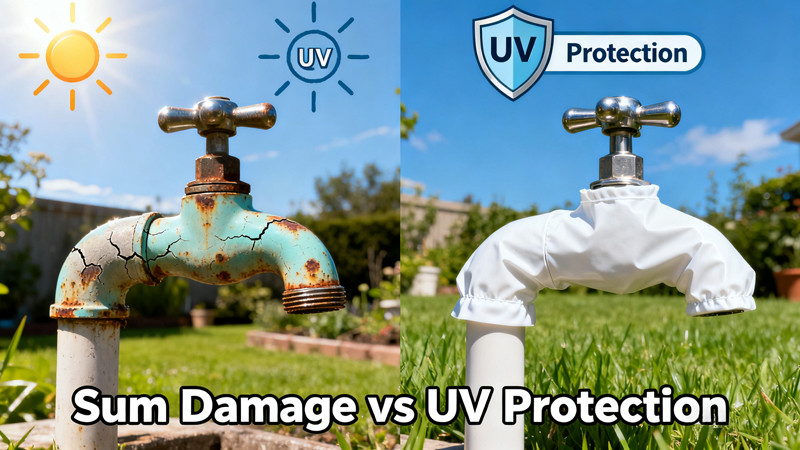
Outdoor faucets are built to endure the elements—rain, wind, heat, and cold—but one of their biggest enemies is often overlooked: UV radiation from the sun. Over time, constant exposure to ultraviolet rays can cause fading, cracking, corrosion, and premature wear on faucet materials. Whether your faucet is brass, stainless steel, or plastic, UV damage can significantly shorten its lifespan and impact both its performance and appearance. Fortunately, with the right protection strategies, you can keep your outdoor faucets looking and working like new for years.
Let’s explore why UV rays are harmful, how to recognize signs of damage, and the best ways to shield your outdoor faucets from the sun’s relentless exposure.
Understanding UV Damage on Faucets
Sunlight contains ultraviolet (UV) rays, which are invisible but extremely powerful. When your outdoor faucet is exposed for hours each day, the UV radiation gradually breaks down its surface materials. The intensity of this damage depends on your location, climate, and the quality of your faucet’s finish.
- Metal Faucets: Prolonged exposure to UV rays can dull the finish, cause pitting or discoloration, and make the metal more susceptible to corrosion. Even stainless steel, which resists rust, can lose its shine and develop micro-surface wear from heat and light exposure.
- Plastic or PVC Faucets: UV rays can make plastics brittle, causing cracks, leaks, or fading. Cheap plastic handles or hose connectors often degrade fastest.
- Rubber and Silicone Parts: Washers, O-rings, and seals can dry out, lose flexibility, and crack due to UV and heat exposure, leading to leaks.
Simply put, the sun’s energy doesn’t just affect the surface—it gradually weakens the faucet’s structure and components over time.
Early Signs of UV Damage
You can spot UV damage before it becomes severe if you know what to look for. Early detection can save you money on replacements or costly repairs. Watch for:
- Color fading – The finish on chrome or matte faucets begins to look dull or uneven.
- Cracking or chalky surfaces – Plastic parts or handles feel rough or develop fine cracks.
- Loose or brittle washers – The faucet leaks around joints or the handle feels stiff.
- Corrosion or tarnish – UV exposure accelerates oxidation, especially in humid climates.
- Deformation – Extreme heat can slightly warp plastic components.
If you notice any of these symptoms, it’s time to start protecting your faucet before the damage worsens.
1. Choose UV-Resistant Materials
The first line of defense is choosing the right faucet. When buying or replacing an outdoor faucet, look for materials and finishes specifically designed to resist UV degradation.
- Solid brass faucets are naturally resistant to corrosion and UV fading when properly coated.
- Stainless steel models with a high-grade finish (such as 304 or 316) perform exceptionally well outdoors.
- Powder-coated or PVD finishes (Physical Vapor Deposition) provide an extra layer of UV protection and color stability.
- Avoid low-grade plastics for outdoor faucets—they often discolor and become brittle within a year of exposure.
Investing in a higher-quality faucet upfront can prevent years of UV-related deterioration.
2. Install a Faucet Cover or Shield
One of the easiest and most effective ways to prevent UV damage is to physically block sunlight from hitting your faucet directly. You can find various options:
- UV-blocking faucet covers made from weather-resistant rubber, vinyl, or silicone.
- Outdoor faucet shields that combine insulation and UV protection—often used for frost protection but equally effective against sun exposure.
- DIY covers such as small fabric awnings, wooden boxes, or plastic housings that shade the faucet area.
If you live in an area with intense sun exposure year-round, a faucet cover can make a noticeable difference in longevity and color retention.
3. Apply UV-Protective Coatings
Just as sunscreen protects your skin, UV-protective coatings can protect your faucet. You can apply these treatments once or twice a year, depending on sun exposure levels.
- Metal protection waxes or sealants form a barrier against UV and moisture. Products designed for outdoor metal fixtures or marine hardware work best.
- UV-resistant clear sprays designed for outdoor furniture, automotive parts, or garden fixtures can add a transparent layer of defense.
- Plastic restorer coatings help rejuvenate faded handles or components while shielding them from further damage.
Make sure the surface is clean and dry before application. Regular maintenance like this can extend the faucet’s lifespan dramatically.
4. Provide Shade Where Possible
If you’re designing or upgrading your outdoor area, consider strategic shading to protect faucets naturally.
- Install a small overhang or awning near outdoor sinks or hose bibs.
- Plant shrubs or vines nearby (but not too close to trap moisture) to provide natural shading.
- Use UV-blocking patio screens to reduce direct sunlight.
Even partial shade during peak sun hours can significantly reduce cumulative UV exposure.
5. Regular Cleaning and Inspection
Dirt, dust, and grime can act as micro-abrasives that worsen UV damage over time. Make it a habit to clean your outdoor faucets regularly:
- Use mild soap and water to wipe down metal surfaces.
- Avoid abrasive pads or harsh chemicals that strip protective coatings.
- Check washers, seals, and handles for brittleness or fading.
- Reapply protective coating after cleaning.
Routine maintenance ensures the faucet remains in top condition while preventing small cracks or discoloration from developing into serious issues.
6. Seasonal Storage and Maintenance
If you live in a region with harsh summers or long, hot seasons, consider giving your faucet a break during extreme conditions:
- Cover or temporarily remove decorative or secondary outdoor faucets not in constant use.
- Drain the line and cap the outlet if you won’t need it for several months.
- Store detachable components (like spray nozzles or hoses) indoors during peak UV months.
Limiting exposure time is one of the most straightforward ways to prevent sun-related wear.
7. Replace Damaged Components Early
If UV damage has already begun—such as cracked handles or brittle washers—replace those parts immediately. Small issues can lead to leaks, corrosion, or full faucet failure. Most outdoor faucet parts are inexpensive and easy to swap out.
Using genuine replacement parts from the manufacturer ensures compatibility and material quality, reducing the chance of future breakdowns.
Conclusion
Outdoor faucets are built tough, but constant exposure to UV radiation silently breaks them down over time. From faded finishes to brittle seals, UV damage can turn a reliable faucet into a costly repair project. The good news? With a few preventive measures—such as using UV-resistant materials, applying protective coatings, adding shade, and maintaining cleanliness—you can dramatically extend the lifespan and beauty of your outdoor faucets.
A little protection today goes a long way in keeping your faucet strong, functional, and gleaming tomorrow. Treat your outdoor faucet like any other part of your home’s exterior—it deserves care and protection from the sun’s relentless power.
 WOWOW Faucets
WOWOW Faucets